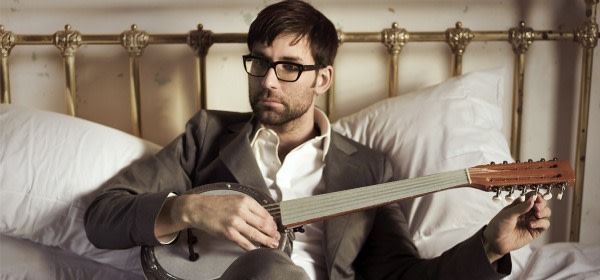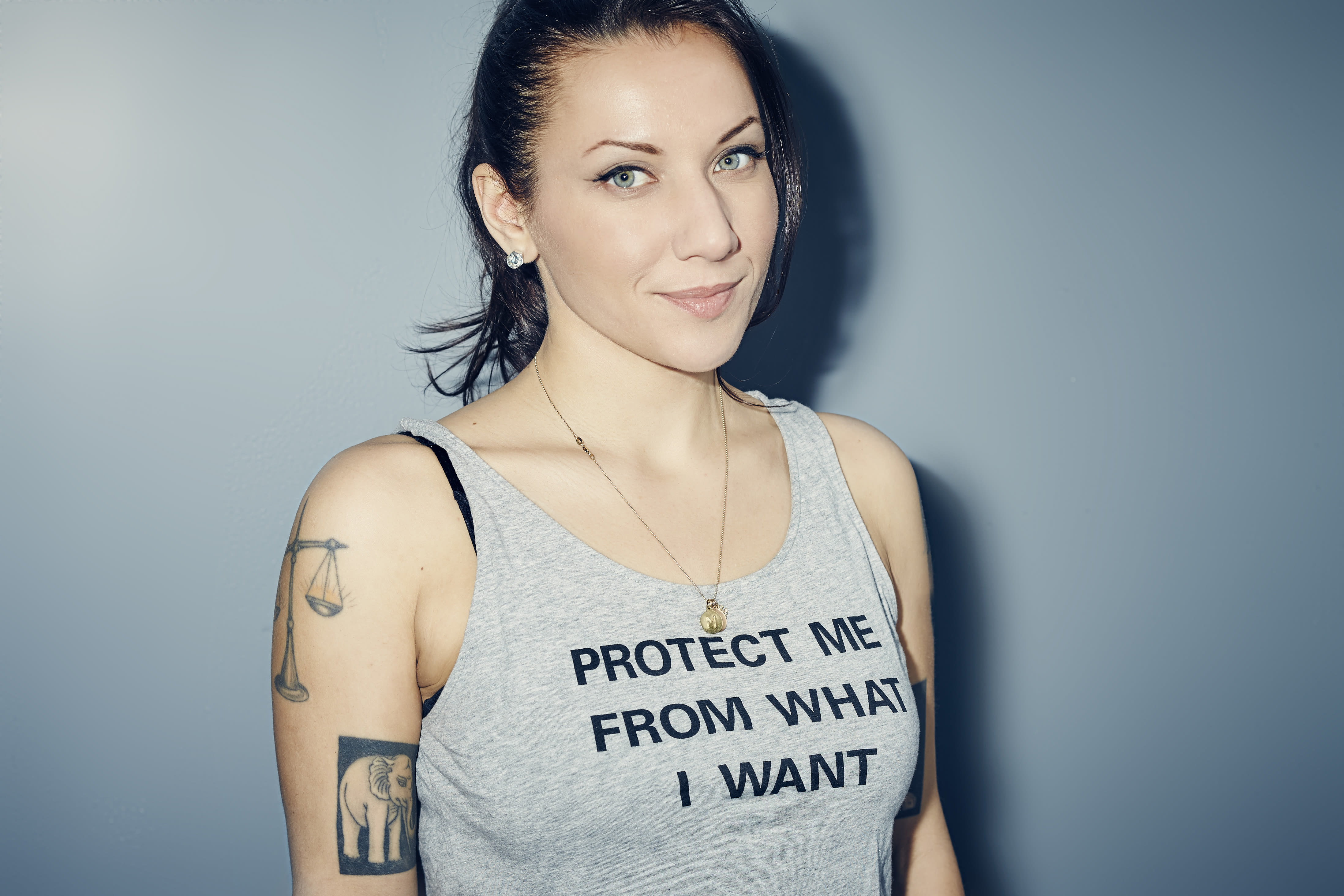Q&A: Jamie Lidell

Jamie Lidell gets his banjo ready for action.
Image: Courtesy Warp Records
English soul singer Jamie Lidell first appeared in the public eye in 1998 with Super_Collider, a band he formed with Chilean electronic musician Cristian Vogel.
Together, they fused percolating, bubbly sound textures with blue-eyed soul vocals to create something dark and mysterious, yet inherently funky.
Today, Lidell’s music may not have the same dark overtones as his early work, but it is still undeniably funky. His new self-titled album, Jamie Lidell, is an R&B rollercoaster filled with erotically charged romps (“You Naked”), ballads (“Don’t You Love Me”), and retro flashbacks (“Do Yourself a Faver”) which harks back to good ol’ days of Cameo and talkboxes.
Lidell plays the Doug Fir on March 30 and is currently touring Europe. We spoke to him after a show in Holland about performing solo, recording in Nashville, and his healthy appreciation of the ’80s.
London was the first show on the tour and I read it was a solo show. Is the rest of the tour a solo experience?
Yeah. Me and my wife were just been talking about the pros and cons of doing things like that, whether it's a good idea and all that. It's interesting to do it—it splits the crowd. Some people hate it, and some people really love it. Sometimes I'm just playing my songs and shamelessly trying to nail the vocals, which is a lot of work. I'm singing some of them and some of them I'm looping—just getting back to my old tricks.
Looping has become one of your trademarks. Have you gotten better at that technique?
Well, I've definitely changed the technology that I'm using. Right now, I'm using a brand new looper that's fully featured. It can do different lengths, loops, re-record itself—it's a much more complicated looper than the one I grew up using. I'm still growing into it.
I know you used the Publison Infernal Machine on this album, the same model that Prince used on some of his music, as well as a lot of artists from the 1980s. Were you trying to go for a distinctively ’80s sound on this album? Maybe evoke a little bit of Prince?
Definitely. I mean, it wasn't like I was setting out to do something ’80s. Although, it definitely has undeniable ’80s pockets, [and the ’80s] is kind of where a lot of my pleasure comes from. I was a child of the ’80s after all. And I'm a big nerd. I love the integrity of sounds. I definitely like to mix and match them in a way that's perhaps a bit unconventional, but I like sounds that have a real undeniable force and a lot of those ’80s synths and ’80s effects have a real character that's been lost a little bit in this digital age.
It was produced in your Nashville home, right?Jamie Lidell @Doug Fir Lounge March 30, 9 pm
Yep.
How does that compare to New York and L.A., where you recorded your last album?
I like it. It's not for everyone—the home studio approach. You got to have a fair bit of discipline. I live there with my wife so I can't just go into a total man cave, although effectively that's what it is. But we really had a sweet experience. Everyone that came over to help me work on the record had a room to stay in. We had plenty of space so for the first time ever we could accommodate people and just make it a pleasant experience for everyone. They're really happy to get out of the rat race of New York and have a chance to kick back. Nashville provides this kind of calm environment and that really helped me to lose my distractions. For a lot of people that might make things harder, but I guess it's all up to you. Discipline is all self-enforced.
I think so too. The cover art for your album is quite striking. It seems to go along with the electronic, synthesized feel of the album. Who was behind the design of that?
Yeah! It was a company called Flat-E. They used to live in a flat called "Flat E."
That makes sense.
It's funny. I worked with them years ago on a work-related project when it was me, the London Sinfonietta, Squarepusher, Plaid, and a bunch of other characters, and they were playing the music of Aphex Twin as a kind of a concept show. So we hadn't worked together in a long time and they got back in touch so they became candidates for someone who could do the artwork. They did that and the first video, and then the look and feel of the live show. It was quite a tantalizing prospect knowing that they were capable individuals.
Is your tour a big production?
It’s six people on the road—me, my manager, my tour manager, a monitor engineer, and two visual artists—one person is doing the projection and controlling the custom software that Flat-E had made. The other is the light operator. For a solo show, I sure know how to burn money [laughs].
On March 30th, you're scheduled to play in Portland. You've been here before in 2010 and played at the Doug Fir. How was that experience?
I've played the Doug Fir a few times, but it feels like I've done it a bunch. I love that place, man. I actually really like the whole experience of staying there in the hotel, especially when you're journeying around America and you pull into that place and it's got a nice diner and is very artist-friendly. The whole thing just feels cool and low-key. It’s a small, intimate gig and to be honest, those are still my favorite venues. I like to play to just a few hundred people and really connect on a musical level. I'm looking forward to it.
Have you visited any other areas in Portland during your past visits?
Not really. It's always such an in-and-out experience. I'm kind of sad about that because I always love rolling through Portland.




